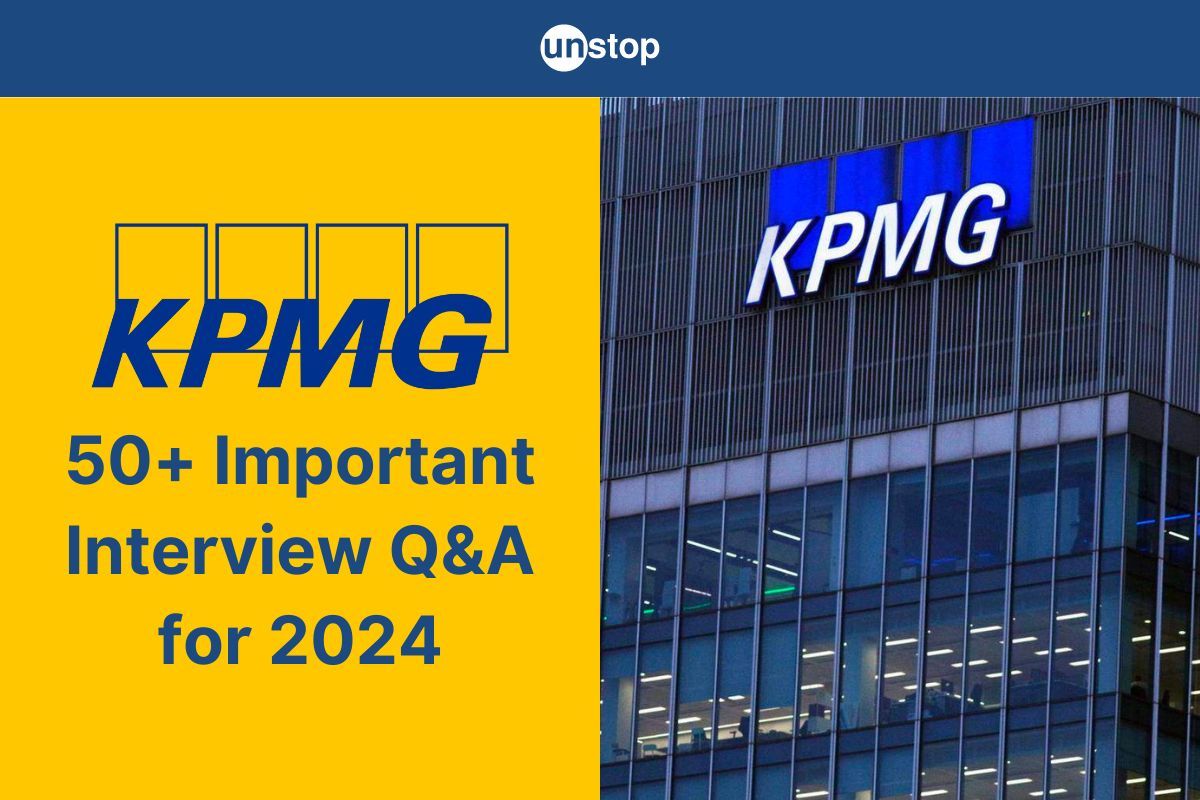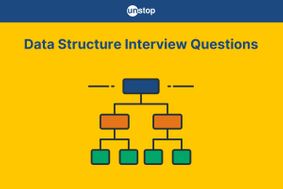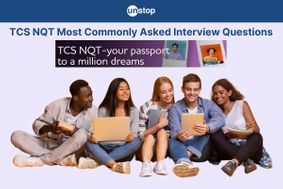- TCS Technical Interview Questions & Answers
- TCS Managerial Interview Questions & Answers
- TCS HR Interview Questions & Answers
- Overview of Cognizant Recruitment Process
- Cognizant Interview Questions: Technical
- Cognizant Interview Questions: HR Round
- Overview of Wipro Technologies Recruitment Rounds
- Wipro Interview Questions
- Technical Round
- HR Round
- Online Assessment Sample Questions
- Frequently Asked Questions
- Overview of Google Recruitment Process
- Google Interview Questions: Technical
- Google Interview Questions: HR round
- Interview Preparation Tips
- About Google
- Deloitte Technical Interview Questions
- Deloitte HR Interview Questions
- Deloitte Recruitment Process
- Technical Interview Questions and Answers
- Level 1 difficulty
- Level 2 difficulty
- Level 3 difficulty
- Behavioral Questions
- Eligibility Criteria for Mindtree Recruitment
- Mindtree Recruitment Process: Rounds Overview
- Skills required to crack Mindtree interview rounds
- Mindtree Recruitment Rounds: Sample Questions
- About Mindtree
- Preparing for Microsoft interview questions
- Microsoft technical interview questions
- Microsoft behavioural interview questions
- Aptitude Interview Questions
- Technical Interview Questions
- Easy
- Intermediate
- Hard
- HR Interview Questions
- Eligibility criteria
- Recruitment rounds & assessments
- Tech Mahindra interview questions - Technical round
- Tech Mahindra interview questions - HR round
- Hiring process at Mphasis
- Mphasis technical interview questions
- Mphasis HR interview questions
- About Mphasis
- Technical interview questions
- HR interview questions
- Recruitment process
- About Virtusa
- Goldman Sachs Interview Process
- Technical Questions for Goldman Sachs Interview
- Sample HR Question for Goldman Sachs Interview
- About Goldman Sachs
- Nagarro Recruitment Process
- Nagarro HR Interview Questions
- Nagarro Aptitude Test Questions
- Nagarro Technical Test Questions
- About Nagarro
- PwC Recruitment Process
- PwC Technical Interview Questions: Freshers and Experienced
- PwC Interview Questions for HR Rounds
- PwC Interview Preparation
- Frequently Asked Questions
- EY Technical Interview Questions (2023)
- EY Interview Questions for HR Round
- About EY
- Morgan Stanley Recruitment Process
- HR Questions for Morgan Stanley Interview
- HR Questions for Morgan Stanley Interview
- About Morgan Stanley
- Recruitment Process at Flipkart
- Technical Flipkart Interview Questions
- Code-Based Flipkart Interview Questions
- Sample Flipkart Interview Questions- HR Round
- Conclusion
- FAQs
- Recruitment Process at Paytm
- Technical Interview Questions for Paytm Interview
- HR Sample Questions for Paytm Interview
- About Paytm
- Most Probable Accenture Interview Questions
- Accenture Technical Interview Questions
- Accenture HR Interview Questions
- Amazon Recruitment Process
- Amazon Interview Rounds
- Common Amazon Interview Questions
- Amazon Interview Questions: Behavioral-based Questions
- Amazon Interview Questions: Leadership Principles
- Company-specific Amazon Interview Questions
- 43 Top Technical/ Coding Amazon Interview Questions
- Juspay Recruitment: Stages and Timeline
- Juspay Interview Questions and Answers
- How to prepare for Juspay interview questions
- Prepare for the Juspay Interview: Stages and Timeline
- Frequently Asked Questions
- Adobe Interview Questions - Technical
- Adobe Interview Questions - HR
- Recruitment Process at Adobe
- About Adobe
- Cisco technical interview questions
- Sample HR interview questions
- The recruitment process at Cisco
- About Cisco
- JP Morgan interview questions (Technical round)
- JP Morgan interview questions HR round)
- Recruitment process at JP Morgan
- About JP Morgan
- Wipro Elite NTH: Selection Process
- Wipro Elite NTH Technical Interview Questions
- Wipro Elite NTH Interview Round- HR Questions
- BYJU's BDA Interview Questions
- BYJU's SDE Interview Questions
- BYJU's HR Round Interview Questions
- A Quick Overview of the KPMG Recruitment Process
- Technical Questions for KPMG Interview
- HR Questions for KPMG Interview
- About KPMG
- DXC Technology Interview Process
- DCX Technical Interview Questions
- Sample HR Questions for DXC Technology
- About DXC Technology
- Recruitment Process at PayPal
- Technical Questions for PayPal Interview
- HR Sample Questions for PayPal Interview
- About PayPal
- Capgemini Recruitment Rounds
- Capgemini Interview Questions: Technical round
- Capgemini Interview Questions: HR round
- Preparation tips
- FAQs
- Technical interview questions for Siemens
- Sample HR questions for Siemens
- The recruitment process at Siemens
- About Siemens
- HCL Technical Interview Questions
- HR Interview Questions
- HCL Technologies Recruitment Process
- List of EPAM Interview Questions for Technical Interviews
- About EPAM
- Atlassian Interview Process
- Top Skills for Different Roles at Atlassian
- Atlassian Interview Questions: Technical Knowledge
- Atlassian Interview Questions: Behavioral Skills
- Atlassian Interview Questions: Tips for Effective Preparation
- Walmart Recruitment Process
- Walmart Interview Questions and Sample Answers (HR Round)
- Walmart Interview Questions and Sample Answers (Technical Round)
- Tips for Interviewing at Walmart and Interview Preparation Tips
- Frequently Asked Questions
- Uber Interview Questions For Engineering Profiles: Coding
- Technical Uber Interview Questions: Theoretical
- Uber Interview Question: HR Round
- Uber Recruitment Procedure
- About Uber Technologies Ltd.
- Intel Technical Interview Questions
- Computer Architecture Intel Interview Questions
- Intel DFT Interview Questions
- Intel Interview Questions for Verification Engineer Role
- Recruitment Process Overview
- Important Accenture HR Interview Questions
- Points to remember
- What is Selenium?
- What are the components of the Selenium suite?
- Why is it important to use Selenium?
- What's the major difference between Selenium 3.0 & Selenium 2.0?
- What is Automation testing and what are its benefits?
- What are the benefits of Selenium as an Automation Tool?
- What are the drawbacks to using Selenium for testing?
- Why should Selenium not be used as a web application or system testing tool?
- Is it possible to use selenium to launch web browsers?
- What does Selenese mean?
- What does it mean to be a locator?
- Identify the main difference between "assert", and "verify" commands within Selenium
- What does an exception test in Selenium mean?
- What does XPath mean in Selenium? Describe XPath Absolute & XPath Relation
- What is the difference in Xpath between "//"? and "/"?
- What is the difference between "type" and the "typeAndWait" commands within Selenium?
- Distinguish between findElement() & findElements() in context of Selenium
- How long will Selenium wait before a website is loaded fully?
- What is the difference between the driver.close() and driver.quit() commands in Selenium?
- Describe the different navigation commands that Selenium supports
- What is Selenium's approach to the same-origin policy?
- Explain the difference between findElement() in Selenium and findElements()
- Explain the pause function in SeleniumIDE
- Explain the differences between different frameworks and how they are connected to Selenium's Robot Framework
- What are your thoughts on the Page Object Model within the context of Selenium
- What are your thoughts on Jenkins?
- What are the parameters that selenium commands come with a minimum?
- How can you tell the differences in the Absolute pathway as well as Relative Path?
- What's the distinction in Assert or Verify declarations within Selenium?
- What are the points of verification that are in Selenium?
- Define Implicit wait, Explicit wait, and Fluent
- Can Selenium manage windows-based pop-ups?
- What's the definition of an Object Repository?
- What is the main difference between obtainwindowhandle() as well as the getwindowhandles ()?
- What are the various types of Annotations that are used in Selenium?
- What is the main difference in the setsSpeed() or sleep() methods?
- What is the way to retrieve the alert message?
- How do you determine the exact location of an element on the web?
- Why do we use Selenium RC?
- What are the benefits or advantages of Selenium RC?
- Do you have a list of the technical limitations when making use of Selenium RC? Selenium RC?
- What's the reason to utilize the TestNG together with Selenium?
- What Language do you prefer to use to build test case sets in Selenium?
- What are Start and Breakpoints?
- What is the purpose of this capability relevant in relation to Selenium?
- When do you use AutoIT?
- Do you have a reason why you require Session management in Selenium?
- Are you able to automatize CAPTCHA?
- How can we launch various browsers on Selenium?
- Why should you select Selenium rather than QTP (Quick Test Professional)?
- Airbus Interview Questions and Answers: HR/ Behavioral
- Industry/ Company-Specific Airbus Interview Questions
- Airbus Interview Questions and Answers: Aptitude
- Airbus Software Engineer Interview Questions and Answers: Technical
- Importance of Spring Framework
- Spring Interview Questions (Basic)
- Advanced Spring Interview Questions
- C++ Interview Questions and Answers: The Basics
- C++ Interview Questions: Intermediate
- C++ Interview Questions And Answers With Code Examples
- C++ Interview Questions and Answers: Advanced
- Test Your Skills: Quiz Time
- MBA Interview Questions: B.Com Economics
- B.Com Marketing
- B.Com Finance
- B.Com Accounting and Finance
- Business Studies
- Chartered Accountant
- Q1. Please tell us something about yourself/ Introduce yourself to us.
- Q2. Describe yourself in one word.
- Q3. Tell us about your strengths and weaknesses.
- Q4. Why did you apply for this job/ What attracted you to this role?
- Q5. What are your hobbies?
- Q6. Where do you see yourself in five years OR What are your long-term goals?
- Q7. Why do you want to work with this company?
- Q8. Tell us what you know about our organization
- Q9. Do you have any idea about our biggest competitors?
- Q10. What motivates you to do a good job?
- Q11. What is an ideal job for you?
- Q12. What is the difference between a group and a team?
- Q13. Are you a team player/ Do you like to work in teams?
- Q14. Are you good at handling pressure/ deadlines?
- Q15. When can you start?
- Q16. How flexible are you regarding overtime?
- Q17. Are you willing to relocate for work?
- Q18. Why do you think you are the right candidate for this job?
- Q19. How can you be an asset to the organization?
- Q20. What is your salary expectation?
- Q21. How long do you plan to remain with this company?
- Q22. What is your objective in life?
- Q23. Would you like to pursue your Master's degree anytime soon?
- Q24. How have you planned to achieve your career goal?
- Q25. Can you tell us about your biggest achievement in life?
- Q26. What was the most challenging decision you ever made?
- Q27. What kind of work environment do you prefer to work in?
- Q28. What is the difference between a smart worker and a hard worker?
- Q29. What will you do if you don't get hired?
- Q30. Tell us three things that are most important for you in a job.
- Q31. Who is your role model and what have you learned from him/her?
- Q32. In case of a disagreement, how do you handle the situation?
- Q33. What is the difference between confidence and overconfidence?
- Q34. If you have more than enough money in hand right now, would you still want to work?
- Q35. Do you have any questions for us?
- Interview Tips for Freshers
- Tell me about yourself
- What are your greatest strengths?
- What are your greatest weaknesses?
- Tell me about something you did that you now feel a little ashamed of
- Why are you leaving (or did you leave) this position??
- 15+ resources for preparing most-asked interview questions
- CoCubes Interview Process Overview
- Common CoCubes Interview Questions
- Key Areas to Focus on for CoCubes Interview Preparation
- Conclusion
- Frequently Asked Questions (FAQs)
- Data Analyst Interview Questions With Answers
- About Data Analyst
Important KPMG Interview Questions With Answers For Technical And HR Rounds (2025)

KPMG is among the largest companies offering auditing and financial services to other firms across the globe. The company is known for its one-of-a-kind working environment and employee benefits. And, this makes KPMG the most desirable company for candidates to work for. The company has three rounds in the interview process for screening candidates, including:
- The technical round
- The technical managerial round
- The HR discussion round
To help you with the interview process at KPMG, here is a list of technical and HR questions that you must know about.
Quick Overview of KPMG Recruitment Process
The whole recruitment process at KPMG, from applying to earning a job offer after completing the interview, takes place entirely online.
- The first part of the process is filling in an application form online.
- If you are successful in this phase, the next phase will consist of a series of hypothetical questions on converting a small firm that will last for 90 minutes (you will need a calculator). This is part of the assessment process.
- After that, there will be a 60-minute written test and video evaluation.
- The last step in the process is called virtual launchpad and it is a 3-hour-long virtual activity in which you should learn more about the company, meet members of staff, and participate in virtual assessment exercises.
Technical Questions for KPMG Interview
To perform well in a KPMG job interview, one must prepare a sample answer for each of the following technical questions.
1. What amount is taxable income?
Earned income such as salaries, wages, and bonuses, as well as unearned investment-related income, are included in taxable income. This is also known as gross income or adjusted gross income. It serves as the basis for calculating the amount of tax that must be paid.
2. What are the five heads of income?
According to the Income Tax Act of 1961, a person's income is split into the following five categories: income through salary, income from house property, revenue from business profit, income from investments/capital assets, and income from other sources.
3. How much of the income from house property is taxable?
If the home was rented out at any point during the tax year in question, the taxpayer is eligible for a deduction equal to 30 percent of the property's annual net value. Concerning residential properties that are used for one's occupancy, deductions for interest paid on funds borrowed for their purchase or construction can be claimed for an amount of up to 2 million rupees.
4. What is income from profits and gains?
The section of the tax return under 'profits and gains of company or profession' is where you should report income generated from your profession or business. The amount of taxable revenue is calculated by subtracting the credits obtained from the business's operation from the total amount of expenses incurred by the company.
5. How do we calculate income from salary?
A person's total income from their wage is calculated by adding their basic salary, HRA, special allowance, and transport allowance, together with any additional allowances he/she receives. There are components of your income that are exempt from taxation, including the reimbursement of your phone bills and any leave travel allowances you receive.
6. Explain income tax purposes?
Income tax is one of the primary sources that the federal government uses to generate revenue for a wide variety of programs and services. Money is used for everything, from funding infrastructure projects like roads and bridges to paying for the military and covering the cost of paychecks for politicians and city officials. The government even uses it to pay for medical care.
7. What are the types of the database management system?
There are three primary categories of DBMS data models: relational, network, and hierarchical. Relational models are the most common. The data is structured into tables that are completely logically independent of one another in relational data architecture. The network data model displays all elements in graphical representations and organizes them. The data is arranged in a form that resembles a tree when using a hierarchical data model.
8. Why are risk management policies important?
When a company is aware of the danger that is connected to its line of work, it is much simpler for that company to take the necessary precautions to protect itself from such dangers. The owners and managers of the company can devise a strategy to mitigate the negative effects of the risks when they have a thorough understanding of the potential consequences of such risks.
9. What is a hybrid approach to regulation?
The term 'hybrid approach' refers to a system that assesses an individual apprentice's skill development by requiring him/her to complete a set minimum number of hours of on-the-job learning and to successfully demonstrate competency following a work process timetable.
10. What is the approach to software development?
The terms 'waterfall,' 'incremental,' and 'spiral' will be used to characterize typical methods or paradigms seen in the process of developing software for the Department of Defense (DoD). In most cases, the incremental development technique serves as the foundation for the development of software within the larger system-level context of evolutionary acquisition (EA).
11. What is the meaning of the conversational approach?
The key to successfully using the conversational technique is to fully grasp the idea of 'person'. It's similar to having a conversation; however, ‘conversational communication’ can help you establish a more precise picture of who your consumer is, how consumers search for your service or product, as well as the goals you want to achieve with your 'public relations.'
12. What is an object-oriented approach in C++?
Writing processes or procedures that carry out operations on the data is the focus of procedural programming, whereas the object-oriented programming paradigm emphasizes the creation of objects that have both data and the capabilities to carry out those operations.
13. What items are sold first under FIFO?
The 'first in, first out (FIFO) inventory valuation approach is typically used by businesses that deal in goods that expire quickly or are prone to becoming obsolete, such as food products or designer clothing. For instance, a grocery shop needs to make consistent purchases of milk to keep sufficient quantities on hand. The FIFO technique operates under the presumption that the products with the longest shelf lives in an organization's inventory were the ones that were sold first.
14. What are the types of tables in the database?
There are three different kinds of tables: base, view, and merged. Each table functions as its document, complete with a title, viewers, and saved visualizations, in addition to its collection of data.
15. What's the difference between keeping a trial balance and keeping a balance sheet?
The trial balance is a sheet used to examine the mathematical accuracy of the recording and posting processes. It contains a list of all the balances that are currently held in a ledger account. A balance sheet is a statement that displays all of the assets, liabilities, and equity of a firm and is used to determine the company's financial situation as of a specific date.
Stay ahead! Never miss out any trending job or internship opportunity!
16. What is a dual aspect of accounting?
According to the dual aspect notion, which can be deduced from its name, every transaction can be viewed from two different perspectives. To offer just one illustration, whenever you buy something, you hand over the money, and then you receive the item. In a similar way, if you sell something, you part ways with it yet gain financial compensation for your efforts. Therefore, there are always two sides to every transaction: the one where you win and the one where you lose.
17. What does 'fundamental accounting equation' mean?
An accounting equation is an empirical formula that is used to define the relationship among the assets, liabilities, and owner's equity of a company model. This fundamentally shows the assets pertaining to a business and the capital that was needed to finance their purchase. However, this equation can be altered by performing operations on both sides of the issue. For instance, assets minus liabilities equals owner's equity is one such modification.
18. Can you explain different sorts of purchase orders, also known as POs?
The standard purchase order, which would be a legal form that is used for buying products and services from the provider, is the first that needs to be thought about and should be the primary focus of your attention. Another kind of purchase order that can be used when you need specific information about the goods and services being purchased is called a blanket purchase order.
In addition to this, there is something known as a ‘Planned PO’, which is believed to be an agreement that lasts for a considerable amount of time and is utilized for committing to the purchase of things and services from a single provider. Further, there is the purchase order (PO), which is created when you and the supplier have reached an agreement on a particular set of terms and circumstances.
19. What are the definitions of FIFO and LIFO?
The inventory cost flow assumption known as first in, first out or FIFO treats the first products brought into stock as being the first goods sold. LIFO stands for last in, first out, and it refers to the inventory cost flow assumption, which considers the most recent items purchased to be the ones that are sold first. The FIFO process assigns a value to the entire inventory based on its current price in an environment of rising prices.
On the other hand, if you have used the LIFO method to evaluate your inventory, you would use expenditures that the company could've incurred many years ago. The analyst needs to take into consideration the LIFO cost flow assumption and think about increasing the value of a company's inventory if the LIFO method is being used by that company. This is necessary to take into account the effects of inflation.
20. Can you explain service tax?
The term 'service tax' refers to an indirect tax that the government levies on certain service providers but for which the end users of those services are the ones who end up footing the bill. Included in the scope of the service tax are establishments such as hotels and restaurants.
21. What is meant by the phrase accrual basis in the context of accounting?
When using the accrual method of accounting, revenues are recognized in the income statement at the same time they are earned. Under the cash basis of accounting, revenues are reflected on the income statement once the cash has been received. When using an accounting method involving the accrual basis, costs are correlated with the revenues to which they are tied and/or are reported when the expense is incurred rather than when the cash is forked over.
Accrual accounting produces an income statement for a company that is more accurate in determining the amount of money it makes during a specified period and this statement is the end product of accrual accounting.
22. Could you give me an explanation of the burden schedule that will be employed for the project?
Understand that selecting the Oracle project will determine which schedule can also be used to calculate multipliers. This includes the schedule that needs to be made for overriding the assigned towards the lower task, the scheduling that needs to be made while assigning to the project, and the standard scheduling that needs to be made for assigning to the task with the lowest priority. When searching for the burden schedule option, it is important to have a general understanding of its three primary applications, which are revenue accrual, internal costing, and invoicing.
23. What is GAAP?
Generally accepted accounting principles (GAAP) are a standard set of accounting principles, procedures, and standards that businesses and their accountants are required to adhere to when producing financial statements. These can be seen as a combination of the standards that have been authoritatively defined by the policy committees and the procedures that are generally accepted for measurement and auditing data.
24. What do you mean when you talk about a person's entire income?
The total income includes any money that can be attributed to India, such as income that has been earned there or received there. A person or organization's total income is the sum of all of its earnings, which may come from a variety of different avenues, such as employment or the provision of services, the revenue generated from sales, payments received from pension schemes, dividend income, or any combination of these. The calculation of total income is typically done to estimate tax liability, determine the net value of a firm, or establish whether or not an individual or organization can make payments on a loan.
25. How can we increase the flow of working capital into a company?
The stock that is currently held by the company should be the focus of recommendation, intended to enhance the flow of the company's working cash. The stock is the element of working capital over which we have command and control. We can exert pressure on our debtors to make prompt repayments, but because they are distinct legal entities, we are unable to exercise direct control over them. In addition to that, we can thank them for the majority of our business.
In the end, it is best to remain consistent with one's stock investment strategy. To have a more effective working capital, it is important to avoid having an excessive amount of stock on hand and to have a high stock turnover rate.
26. What does it mean when you get a tax refund?
A tax refund is a payment made by the government to a person. It involves the amount of tax that was paid by that individual that was more than the amount of tax that was payable. After taking into account your income tax, any withholdings, tax deductions or credits, and any other relevant considerations, you file your income tax return for the year, and once it has been processed, you will be issued a tax refund.
27. What is the alternative minimum tax, sometimes known as AMT?
Alternative minimum tax, sometimes known as AMT, is a method that can be used to prevent tax avoidance by rich individuals. After accounting for allowable deductions, taxable income is computed according to AMT using a distinct set of criteria. Because AMT places a cap on certain advantages that lower a taxpayer's regular tax amount, this pertains more frequently to taxpayers with higher incomes. Therefore, if the tax benefits bring the total tax liability down below the AMT ceiling, the taxpayer is responsible for paying the higher AMT amount.
28. Define deferred tax liability.
A tax obligation is owed by a company, but it doesn't pay it at present. However, the company will be accountable for paying something in the future. A deferred tax obligation, also known as DTL, is an item on a balance sheet that is used to account for the temporary difference between taxes that also are paid today and taxes that are owed in the future. Deferred tax liability is the category that includes the unrealized tax that's also taken into account. The most important contributor to or category of deferred tax liability is an item known as depreciation.
29. What do you mean by fair rent?
The rent that is determined and registered by a rent officer is considered to be fair. Notably, fair rent is the rent that is charged for private property. The size of the unit, its current condition, and the number of potential tenants all play a role in determining the rent amount. The mortgage interest, other finance costs, and depreciation that are associated with specific properties, such as land, buildings, and equipment that is permanently installed, are replaced by the calculation of the fair rent. It is only computed once, at the point in time when the facility begins regular operations.
30. What is a ledger?
One way to refer to an accounting book is as a ledger. Notably, a ledger is a book that maintains a record of journal entries in chronological order as they relate to individual accounts. The act of recording these diary entries in a permanent format is referred to as posting.
31. What is excise duty?
The central excise duty is a form of indirect tax that is levied on those products that are produced in India and are intended for consumption within the country. The term 'manufacturing' denotes the taxable event, as well as the point at which the items are considered to be subject to central excise duty, immediately following the point at which they are made. It is a tax on manufacturing and the payer of the tax is the manufacturer. The manufacturer then passes the cost of the tax on to consumers.
32. What is the distinction between making a profit and gain?
Profit is the amount that is left over after deducting expenses from revenue. Expenses are the things that make it feasible for a business to receive revenue. There are two ways to make money: directly and indirectly. Direct earnings make up one stream and indirect earnings make up the other. Direct earnings are incurred from primary operations, whereas indirect earnings are incurred from other activities. Hence, profits are measured as gross profit and net profit. Direct earnings come from primary activities. Indirect earnings come from other activities.
The amount of money left over after deducting the cost of doing business from total revenue is known as gross profit (expenses related to the main activities of the business). The amount of revenue that is considered 'net profit' is the whole amount of revenue, which includes profits from other operations.
A gain includes the funds that are made from the sale of assets that are not considered to be part of the inventory of the company. This sales activity isn't just about actual trading, and the items that are being sold in these sales are not the same as those that are sold on a regular basis.
33. What is an assessment year?
An assessment year is a period during which your income from the previous year is evaluated to file your ITR (income tax return). The first day of an evaluation year is April 1, and it lasts through the last day of March the following year.
34. What is meant by data redundancy?
Interview questions on relational databases are frequently centered on data redundancy and the many approaches that may be taken to eliminate it. Data redundancy is simply the act of repeating information in several places. It is in everyone's best interest to get rid of redundancy as much as is humanly possible, as it causes a waste of storage space and compromises the integrity of the database.
35. What does normalization mean?
Normalization is the act of structuring the fields and tables of a database in such a way as to reduce as much redundancy and dependency as possible. The primary objective of normalization is to include, exclude, or otherwise alter fields that are included in a single table.
36. What is the main distinction between cluster index and non-cluster index?
By modifying the way in which the entries are kept, the clustered index can be used to make data retrieval from the database significantly simpler. The database organizes the rows based on the column that is configured to use the clustered index.
A non-clustered index doesn't change the way the data was initially stored, but it does generate a whole new object that is part of the table. Following the search, it leads you back to the rows of the initial table.
37. What is OLTP?
The acronym OLTP stands for online transaction processing and refers to the management of programs based on transactions that can be used for data entry, retrieval, and processing. OLTP makes data administration simple and efficient. OLTP systems, as opposed to OLAP systems, aim to serve real-time transactions as their primary purpose.
38. What do you know about linked subqueries about DBMS?
A correlated subquery is a type of subquery that is dependent on the results of another query. Therefore, we refer to the results of such an operation as correlated subqueries. This occurs when the subqueries are conducted for each row returned by the outer queries. Each subquery is only run once, regardless of the number of rows returned by the outer query.
You may also think of associated subqueries as all those queries that the parent statement uses to process rows individually. The 'SELECT,' 'UPDATE' or 'DELETE' command can serve as the parent statement in this situation.
39. What is ACID?
Atomicity, consistency, isolation, and durability is also referred to as ACID. Atomicity refers to the condition in which a process is either carried out in its entirety as a single unit or just not carried out at all. The database must be consistent both before and after the transaction. Multiple transactions were successful without any intervention and each transaction stands on its own. The system experiences a failure and then the operation is carried out effectively.
40. What is ELT?
ELT stands for extract load transform. ETL loads data into a data warehouse, while ELT loads data into a staging area where it could be transformed before even being put into the final destination.
41. What is DML?
Data manipulation language, sometimes known as DML, is a programming language that may be used to retrieve, modify, and add data. Users are granted access to the data as a result of this component of the relational database management system (RDBMS). It is primarily used as a minuscule component of a bigger database language, including SQL, where it takes the shape of a few different kinds of operators.
42. What are the benefits of database locking?
The most significant benefit of locking databases is that they protect the data from being corrupted. Once a certain process has locked the database, no other process can make any changes to it. Because of the ACID features of transactional processes, locking the database before beginning the process is an absolute must.
HR Questions for KPMG Interview
Here we have listed some of the frequently asked HR questions that you could face during your KPMG HR round which require basic answers, provided you give an honest reply.
- How do you deal with failure in life?
- Will you be able to deal with internal auditors and external auditors?
- Will you be able to perform under stressful situations?
- How many years of relevant experience do you have for this job role?
- What do you think about our company culture?
- Will you be able to maintain a strong association with management?
- Are you able to lead an entire management team?
- What are your ideas on management competencies?
- Do you have the required advanced skills required for this job?
- Do you think you have a high level of stress tolerance?
About KPMG
KPMG is a global group of independent member businesses that was founded in 1987 and provides audit and assurance, tax and legal, and advisory services. Corporate entities, governments, public institutions, and not-for-profit organizations are a few of the firm's clientele. KPMG serves the industries of financial services, software, telecommunications, industrial and automotive products, chemicals, energy, transportation, food and beverage, infrastructure, and healthcare. You will increase your chances of succeeding in the interview if you can demonstrate how you can provide value to the business.
Having sufficient background knowledge of the organization always demonstrates your interest in the company and improves your chances of success in the interview. Therefore, be sure you are ready to respond to KPMG interview questions concerning the company's activity and history as a whole.
You may also like to read:
As a biotechnologist-turned-writer, I love turning complex ideas into meaningful stories that inform and inspire. Outside of writing, I enjoy cooking, reading, and travelling, each giving me fresh perspectives and inspiration for my work.
Login to continue reading
And access exclusive content, personalized recommendations, and career-boosting opportunities.
Subscribe
to our newsletter
Blogs you need to hog!

How To Write Finance Cover Letter For Morgan Stanley (+Free Sample!)

55+ Data Structure Interview Questions For 2025 (Detailed Answers)

How To Negotiate Salary With HR: Tips And Insider Advice















Comments
Add comment